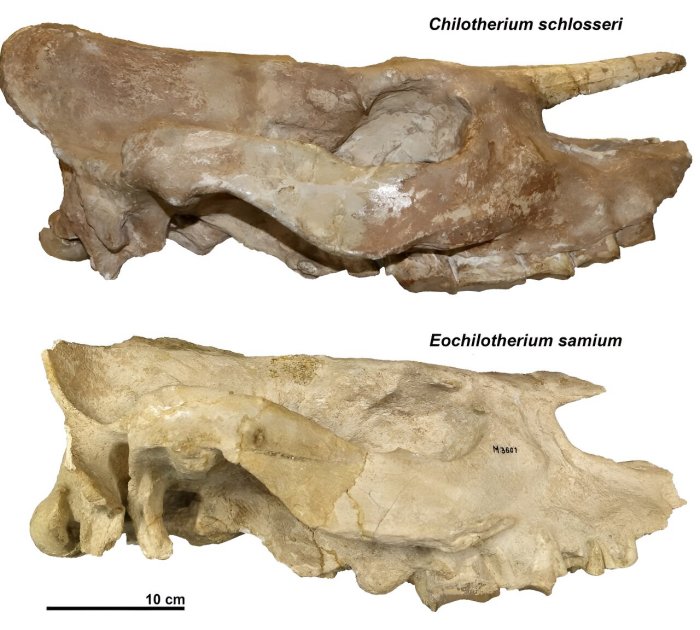Jan Bartek – AncientPages.com – Paleontologists from Tübingen have redefined a rhinoceros genus that had fallen into oblivion: Eochilotherium lived more than 5 million years ago and did not have a horn on its nose. Hornless rhinos were known to be ancestors of today’s species.
An international research team from Germany, Greece, Bulgaria and South Africa shows, in the Journal of Vertebrate Paleontology, that these animals were more diverse than previously thought. Panagiotis Kampouridis of the Senckenberg Center for Human Evolution and Paleoenvironment at the University of Tübingen re-examined the fossil skulls of hornless rhinos.

On the basis of these skulls, the relationships of the hornless rhinoceros species were redefined. Credit: Journal of Vertebrate Paleontology (2023). DOI: 10.1080/02724634.2023.2254360
Today’s rhinos bear the characteristic horns on their nose and/or forehead and live Africa and Asia. Three of the five species are currently threatened with extinction. In the 40-million-year-old evolutionary history of large herbivores, there have been numerous species that have gone extinct, including many without horns.
Hornless rhinos were perhaps the most diverse group of the entire family and one of the most species-rich genera is known as Chilotherium. They lived in Asia as well as in Eastern and Southeastern Europe. They were smaller than today’s species and with extremely short legs were probably not as eager to run as today’s rhinos. They had tusk-like incisors and grazed in open landscapes. Five million years ago at the latest, chilotheres became extinct in Europe and a little later also in Asia, probably also because of changed climatic conditions.
The original fossils of two chilothere species, Chilotherium schlosseri and Eochilotherium samium—so called holotypes—were destroyed during the Second World War. This made the identification of the two species difficult. Kampouridis, a Ph.D. student and first author of the publication, therefore searched for new evidence, traveling to various European museums.
Using two skulls, from the Museum der Natur Hamburg and from the Senckenberg Naturmuseum Frankfurt, he finally succeeded in redefining the species. The skulls confirm that there was another genus of hornless rhinoceroses besides Chilotherium, Eochilotherium. This is shown by the shape of the skull and teeth—Eochilotherium samium has a slightly smaller and narrower skull and less pronounced enamel folds in the upper teeth than Chilotherium schlosseri.
A complex history of migration
The authors of the study even ᴀssume that two other species from China, which, like Eochilotherium samium, were previously included in the genus Chilotherium, are actually more closely related to Eochilotherium or may even represent another genus. “This changes our understanding about the chilothere group, which was previously thought to contain only two genera. According to the present results, there are three, possibly four,” says co-author Professor Nikolai Spᴀssov of the Bulgarian Academy of Sciences.
“Our results also provide insight into the biogeography of the short-legged chilotheres, which, according to previous findings, migrated to Europe from Asia at least twice. However, it is possible that their distribution history is even more complex,” says Professor Madelaine Böhme of the University of Tübingen and the Senckenberg Center for Human Evolution and Paleoenvironment.
This fundamental study is therefore the basis of a detailed study of the last European chilotheres, which did not survive despite high diversity, say the authors. It shows the importance of detailed study of species that are already known, they add. “Rhinos, like other large herbivores, have very important roles in their respective ecosystems, and their loss can lead to far-reaching consequences for the rest of the fauna,” Kampouridis says. “This is as true for fossil ecosystems as it is for present-day ecosystems.”
The study was published in the Journal of Vertebrate Paleontology
Written by Jan Bartek – AncientPages.com Staff Writer





